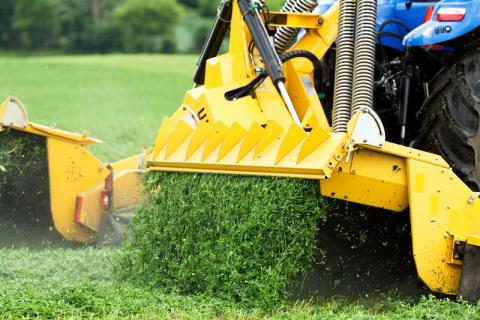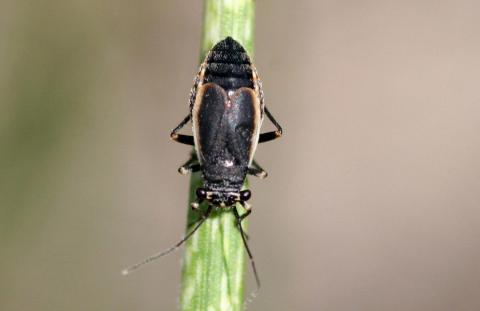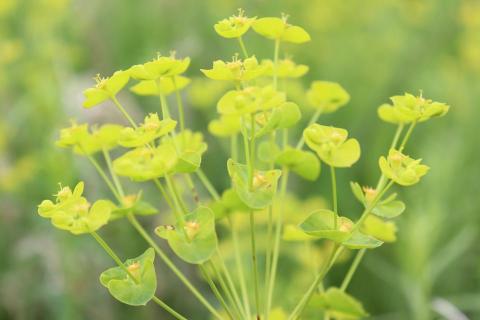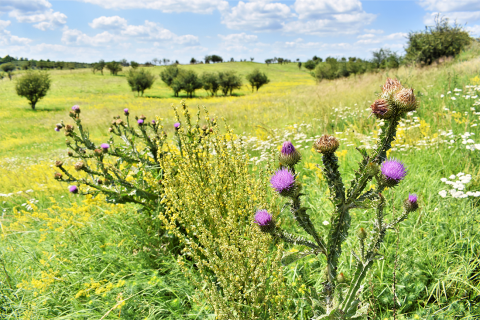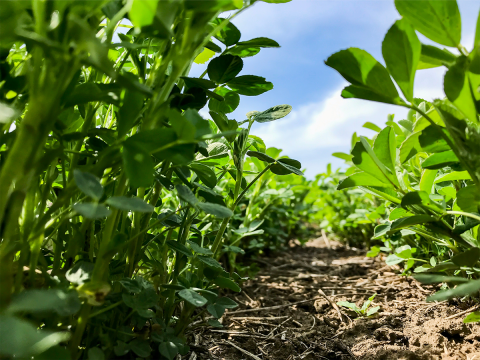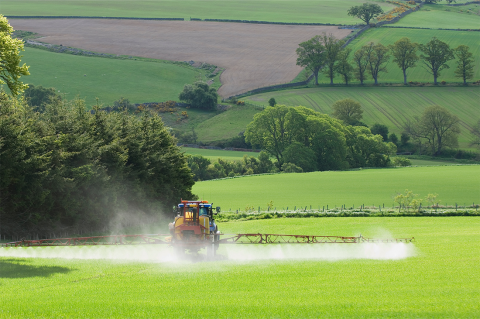Pasture and Forage Minute: Drought-stunted Alfalfa Options, Bluegrass Control
June 27, 2023
Recommendations for producers facing short alfalfa stands from drought stress and encroaching bluegrass, plus water needs for livestock during summer.
Pasture and Forage Minute: Planting Forage in Stubble and Seeding Year Alfalfa Management
June 20, 2023
Tips on planting forages into wheat and rye stubble, how to get the most from your first-year alfalfa and controlling yucca plants on rangeland in western and central Nebraska.
Pasture and Forage Minute: Irrigating First Cutting Alfalfa, Black Grass Bugs and Short Pastures
June 9, 2023
This week — irrigation strategies for moisture-stressed alfalfa prior to first cutting, controlling black grass bugs in wheatgrass, and techniques for stretching pasture.
Pasture and Forage Minute: Controlling Alfalfa Weevil and Leafy Spurge, First Cutting Alfalfa
June 1, 2023
With first cutting alfalfa to begin soon, extension educators discuss the importance of scouting for alfalfa weevils to mitigate yield losses and strategies for timing harvest, plus control options for leafy spurge.
Pasture and Forage Minute: Wheat Grazing vs. Grain Value, Choosing Summer Forage
May 16, 2023
This week — Recommendations for producers considering wheat for forage, including varieties and planting timelines for summer annual grasses, plus tips on control measures for poison hemlock.
Pasture and Forage Minute: Equipment Maintenance, Controlling Musk Thistle and No-Till on the Plains Tours
May 11, 2023
This week, extension educators review a checklist for pre-season hay equipment maintenance, tips for controlling musk thistle in pastures, and details of this year's No-Till on the Plains Whirlwind tours in June.
Pasture and Forage Minute: Alfalfa Weevil, Weed Control and Summer Pasture Turn-out
May 4, 2023
This week — Controlling alfalfa weeds with post-emergent herbicides, scouting for alfalfa weevil, and planning the date and pastures for spring turn-out.
Pasture and Forage Minute: Calculate ROI Before Fertilizing Pastures
April 26, 2023
This week: Fertilizing pastures — an in-depth analysis on the economics of applying fertilizer to Nebraska pastures this season.


